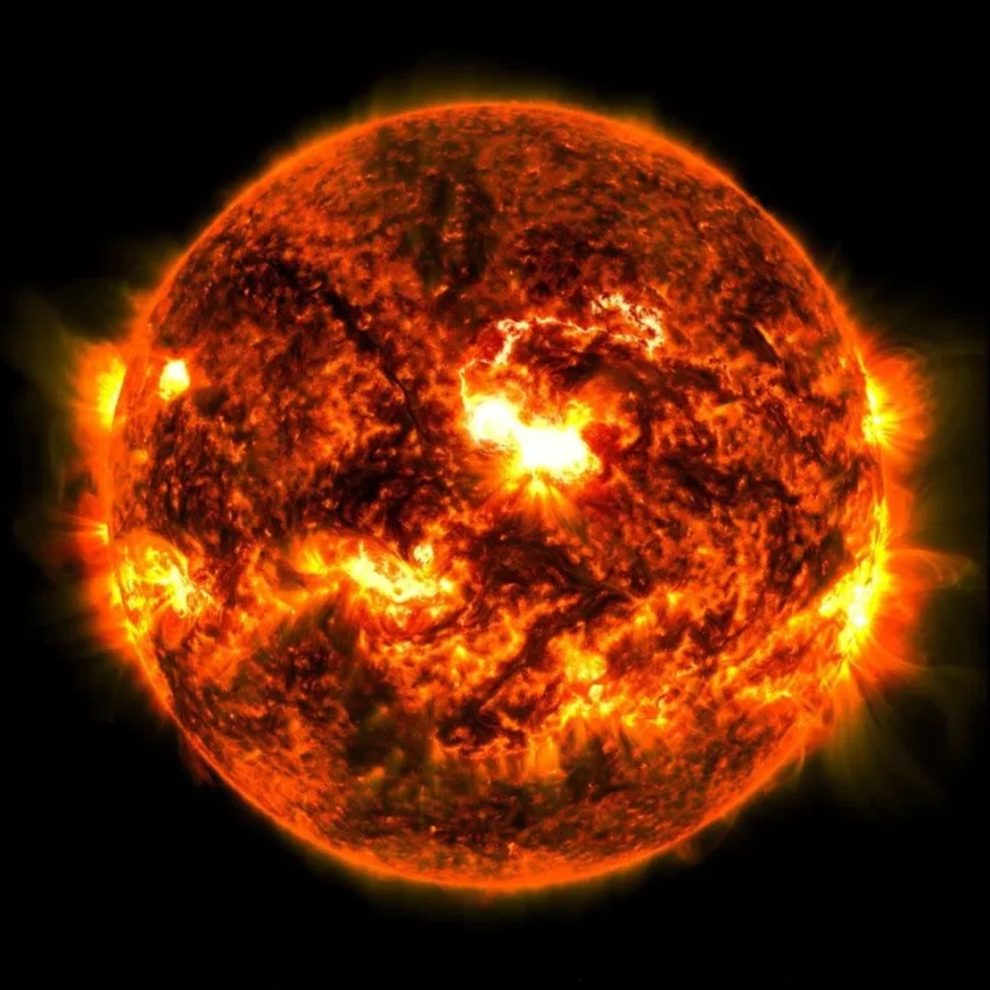() – In some areas of Alabama and northern California, in the United States, colorful auroras could be visible this Thursday much further south than they normally appear, due to a powerful solar flare and coronal mass ejection released from the sun, according to the Space Weather Prediction Center of the National Meteorological Service.
The powerful solar storm, rated as level 4 on a scale of 1 to 5, could also disrupt communications, power grid and satellite operations, according to center officials.
The storm is expected to reach Earth between early morning and 12 pm ET on Thursday, with the possibility of lasting into Friday.
The full intensity and characteristics of the storm, which is moving toward Earth at more than 4 million kilometers per hour, will not be known until it reaches the Deep Space Climate Observatory and the Advanced Composition Explorer satellites orbiting 1, 6 million kilometers from Earth.
The satellites will measure the speed and magnetic intensity of the storm, which is expected to reach Earth 15 to 30 minutes after reaching space observatories, Shawn Dahl, service coordinator for the Space Weather Prediction Center, said at a conference. press release on Wednesday.
A series of more intense solar flaresknown as class X flares, have been released from the sun this week. The flares also coincided with coronal mass ejections on Tuesday.
Coronal mass ejections are large clouds of ionized gas called plasma and magnetic fields that erupt from the sun’s outer atmosphere. When these explosions are directed at Earth, they can cause geomagnetic storms, or major disturbances of the Earth’s magnetic field.
“Geomagnetic storms can impact infrastructure in near-Earth orbit and on the Earth’s surface,” according to the Space Weather Prediction Center.
As a result, the center has notified the Federal Emergency Management Agency, North America’s power grid, and satellite operators to prepare for outages, especially given the number of preparations and relief efforts expected for the hurricane. Milton, Dahl said.
Historically, G4 storms are common during a solar cycle, but extreme G5 geomagnetic storms, like the one that happened on May 10are incredibly rare, Dahl said. This new storm has a 25% chance of becoming a G5, he said.
As the sun approaches solar maximumthe peak in its 11-year cycle, expected this year, is becoming more active, and researchers have observed increasingly intense solar flares erupting from the fiery orb.
Increased solar activity causes auroras to dance around the Earth’s poles, known as the northern lights, or aurora borealis, and the southern lights, or aurora australis. When energized particles from coronal mass ejections reach Earth’s magnetic field, they interact with gases in the atmosphere to create those different colored lights in the sky.
Currently, scientists at the prediction center believe that visible auroras are likely to appear in the eastern central and lower Midwest states, but it remains to be seen if the storm will cause a global aurora phenomenon like G5 did in May, Dahl said. But if the storm escalates to a G5, auroras could be visible across the southern states and elsewhere around the world.
National Oceanic and Atmospheric Administration officials recommend using the aurora panel center to find out if the Northern and Southern Lights are predicted to be visible in your area. The dashboard is constantly updated and can show where an aurora may appear within minutes of the information becoming available.
The chance of seeing auroras has also increased considerably, as darkness falls earlier during this time of year in the Northern Hemisphere. Skywatchers in the U.S. who viewed auroras caused by a G3 storm over the weekend witnessed the northern lights within an hour or two after dark, Dahl said.
And even if the colorful displays don’t seem obvious to the naked eye, sensors in cameras and cellphone cameras can pick them up, center officials said.
NOAA scientists said they do not believe this week’s storm will surpass the one in May. Before that, the last G5 storm to hit Earth was in 2003, causing power outages in Sweden and damaging power transformers in South Africa.
During the May geomagnetic storm, tractor company John Deere reported that some customers who rely on GPS for precision farming experienced an outage. But for the most part, power grid and satellite operators kept satellites in order and correctly in orbit and managed the buildup of intense geomagnetic currents in grid systems.
The May solar storm was the most successfully mitigated space weather storm in history, according to Dahl.
Scientists continue to monitor spikes in solar activity as they increase because they could indicate where the sun currently is in its cycle.
The speed of Tuesday’s coronal mass ejection surprised center scientists because it is the fastest measured in this solar cycle so far, Dahl said. But that doesn’t mean peak solar activity is happening right now. Previous solar cycles have shown that some of the largest storms can occur after the peak, he said.
“We are in the middle of solar maximum right now; we just don’t know if we’ve reached the peak yet,” Dahl said. “That will be decided later and could be sometime this year or even early next year. In short, we are still in for a ride with solar cycle activity this year, as well as next year and even into early 2026.”














![[Img #74683]](https://thelatestnews.world/wp-content/uploads/2024/12/The-main-mistakes-to-avoid-when-betting-on-electronic-sports-300x200.jpg)

Add Comment